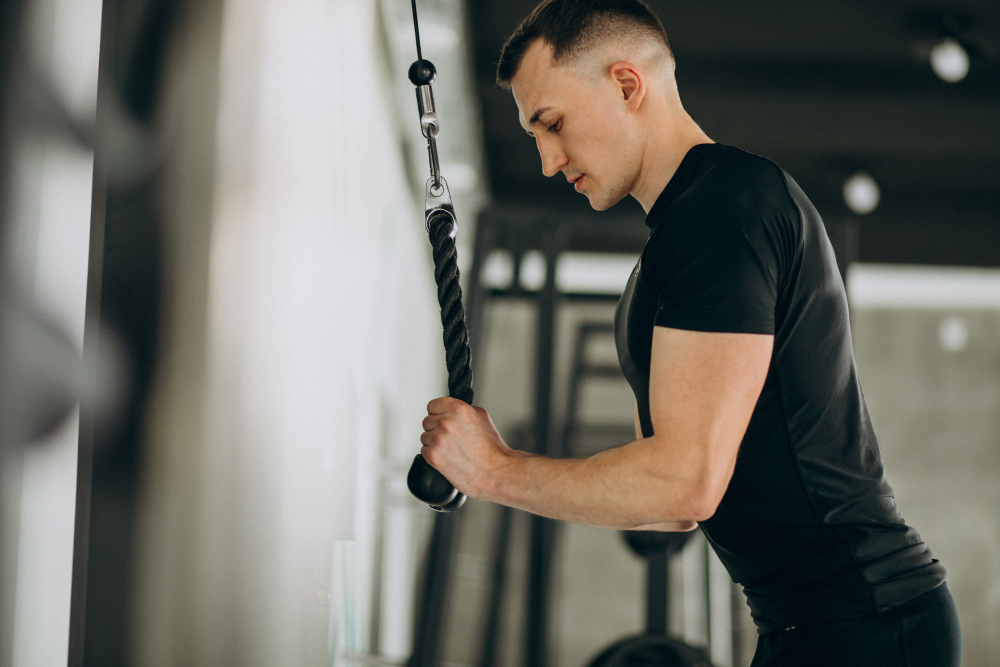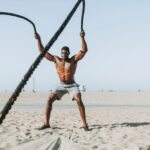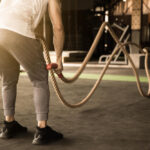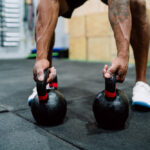Want stronger, more defined arms but don’t know where to start? You’re in the right place. This guide covers the 12 most effective arm exercises for beginners—ones that build real strength without complicated techniques or high injury risk. You’ll get clear form instructions, common mistakes to avoid, and a simple workout structure you can start today.
Whether you’re training at a gym or at home, these exercises work.
What Makes a Good Beginner Arm Exercise?
Not all arm exercises are beginner-friendly. The best ones for starting out have three things in common:
Simple movement patterns that are easy to learn and hard to mess up. You shouldn’t need a biomechanics degree to do them correctly.
Low injury risk when performed with proper form. Your joints are still adapting to resistance training—exercises should build strength, not create problems.
Clear muscle activation so you can actually feel what’s working. This mind-muscle connection helps you learn faster and get better results.
The exercises below check all three boxes.
Best Biceps Exercises for Beginners
Your biceps are responsible for pulling and curling movements. These three exercises hit them from different angles.
1. Dumbbell Bicep Curl
The foundation of arm training. Simple, effective, and nearly impossible to mess up if you follow proper form.
How to do it:
- Stand with feet shoulder-width apart, dumbbell in each hand, palms facing forward
- Keep elbows close to your sides throughout the movement
- Curl the weights up slowly, focusing on squeezing your biceps at the top
- Lower back down with control—don’t just drop them
- Keep your upper arms stationary; only your forearms should move
Common mistakes:
- Swinging your body to lift heavier weights
- Moving your elbows forward or backward
- Rushing through reps instead of controlling the weight
Why it works: Dumbbells let each arm work independently, which helps fix strength imbalances early. The natural rotation of your wrist during the curl also reduces strain on your forearms.
2. Cable Bicep Curl
Cables provide constant tension throughout the entire movement, which makes them excellent for building the mind-muscle connection.
How to do it:
- Stand facing a cable machine with a straight bar or rope attachment set at the lowest position
- Grab the attachment with an underhand grip, arms fully extended
- Curl the bar up toward your shoulders, keeping elbows pinned to your sides
- Squeeze at the top for one second
- Lower slowly back to the starting position
Common mistakes:
- Leaning back to use momentum
- Letting your elbows drift forward
- Not fully extending your arms at the bottom
Why it works: The constant tension from the cable forces your biceps to work through the entire range of motion, unlike free weights where tension drops at certain points.
3. Hammer Curl
This variation hits both your biceps and your brachialis (the muscle underneath), plus it builds serious grip strength.
How to do it:
- Hold dumbbells at your sides with palms facing each other (neutral grip)
- Curl the weights up while keeping your palms facing inward
- Focus on keeping your elbows stationary
- Lower with control
Common mistakes:
- Rotating your wrists during the movement
- Using too much weight and swinging
- Not keeping your elbows tight to your body
Why it works: The neutral grip reduces stress on your wrists and targets muscles that regular curls don’t fully engage, giving you more complete arm development.
Best Triceps Exercises for Beginners
Your triceps make up about two-thirds of your upper arm mass. If you want bigger arms, you need to train them hard.
4. Cable Tricep Pushdown
One of the most beginner-friendly tricep exercises. The cable machine guides the movement, making it nearly impossible to use improper form.
How to do it:
- Stand facing a cable machine with a straight bar or rope attachment at the highest position
- Grab the attachment with an overhand grip, elbows bent at 90 degrees and tucked to your sides
- Push down until your arms are fully extended, focusing on squeezing your triceps
- Return to the starting position with control—don’t let the weight pull your arms up
Common mistakes:
- Flaring elbows out to the sides
- Leaning forward or using your body weight
- Not fully extending at the bottom
Why it works: The fixed position of the cable forces you to isolate your triceps. You can’t cheat the movement with momentum, which means better muscle activation.
5. Overhead Dumbbell Extension
This exercise stretches your triceps through a full range of motion, hitting all three heads of the muscle.
How to do it:
- Sit or stand holding one dumbbell with both hands
- Raise it overhead with arms fully extended
- Lower the weight behind your head by bending at the elbows, keeping upper arms stationary
- Press back up to the starting position, focusing on the tricep contraction
Common mistakes:
- Flaring elbows out to the sides (keep them close to your head)
- Arching your lower back
- Using too much weight and losing control
Why it works: The overhead position fully stretches your triceps, which research shows leads to greater muscle growth compared to exercises that don’t provide a deep stretch.
6. Close-Grip Push-Up
A bodyweight option that builds tricep strength and teaches you how to stabilize your shoulder blades—useful for every other upper body exercise.
How to do it:
- Start in a push-up position with hands directly under your shoulders (closer than a regular push-up)
- Keep your elbows tucked close to your sides as you lower down
- Lower until your chest nearly touches the ground
- Push back up, focusing on squeezing your triceps at the top
Common mistakes:
- Letting your elbows flare out wide
- Sagging hips or piking your butt up
- Not going through a full range of motion
Why it works: No equipment needed, and it teaches you proper shoulder positioning that transfers to other pressing movements. Plus, it builds core stability.
7. Bench Dip
Another bodyweight option, but this one requires careful attention to shoulder position to avoid injury.
How to do it:
- Sit on the edge of a bench with hands gripping the edge next to your hips
- Slide your butt off the bench, supporting your weight with your arms
- Lower yourself by bending your elbows until they reach about 90 degrees
- Press back up to the starting position
Common mistakes:
- Going too deep and stressing your shoulders
- Shrugging your shoulders up toward your ears
- Flaring elbows out instead of keeping them back
Why it works: Highly effective for building tricep strength, but start conservatively with your range of motion until you build shoulder stability.
Best Forearm Exercises for Beginners
Most beginners skip forearms, which is a mistake. Grip strength limits your performance on nearly every other exercise.
8. Wrist Curl
Targets the flexor muscles on the underside of your forearms.
How to do it:
- Sit on a bench with a light dumbbell in each hand
- Rest your forearms on your thighs with wrists hanging over your knees, palms up
- Curl your wrists up as high as possible
- Lower back down with control
Common mistakes:
- Using too much weight (these are small muscles)
- Rushing through reps
- Lifting your forearms off your legs
Why it works: Isolates the forearm flexors, which are crucial for grip strength in pulling exercises like rows and deadlifts.
9. Reverse Wrist Curl
Works the extensor muscles on top of your forearms—often neglected but important for balanced development and injury prevention.
How to do it:
- Same position as wrist curls, but palms facing down
- Curl your wrists up, lifting the backs of your hands toward your forearms
- Lower back down slowly
Common mistakes:
- Using too much weight
- Moving your forearms instead of just your wrists
Why it works: Strengthens the often-weak extensor muscles, which helps prevent elbow tendinitis and improves overall grip balance.
10. Farmer’s Carry
One of the most functional exercises you can do. Builds grip, forearm endurance, and core stability all at once.
How to do it:
- Pick up a heavy dumbbell or kettlebell in each hand
- Stand tall with shoulders back and core engaged
- Walk forward for 30-60 seconds or 40-50 feet
- Set the weights down with control
Common mistakes:
- Letting your shoulders roll forward
- Leaning to one side
- Walking too fast and losing control
Why it works: Forces your forearms to work under time under tension, which builds serious grip endurance. Also teaches you how to stabilize your core under load.
Additional Compound Exercises That Build Arms
These aren’t isolation exercises, but they build serious arm strength while working multiple muscle groups.
11. Chin-Up (or Assisted Chin-Up)
Primarily a back exercise, but one of the best bicep builders available.
How to do it:
- Grab a pull-up bar with an underhand grip (palms facing you), hands shoulder-width apart
- Hang with arms fully extended
- Pull yourself up until your chin clears the bar
- Lower back down with control
Beginner modification: Use an assisted chin-up machine or resistance band to reduce the weight you’re lifting.
Why it works: Research consistently shows that chin-ups activate the biceps more than any curl variation. Plus, you’re building back strength and grip simultaneously.
12. Diamond Push-Up
An advanced push-up variation that hammers your triceps.
How to do it:
- Get in a push-up position with hands close together, forming a diamond shape with your thumbs and index fingers
- Keep your elbows tucked as you lower down
- Push back up, squeezing your triceps at the top
Beginner modification: Do these from your knees until you build enough strength for the full version.
Why it works: Studies show diamond push-ups activate the triceps more than regular push-ups or even some isolation exercises.
How to Structure Your Beginner Arm Workout
Don’t just randomly do exercises. Here’s a simple structure that works:
Frequency: Train arms 1-2 times per week with at least 2-3 days of rest between sessions
Exercise selection:
- Choose 2-3 biceps exercises
- Choose 2-3 triceps exercises
- Choose 1-2 forearm exercises (or skip if you’re doing farmer’s carries and chin-ups)
Sets and reps:
- 3 sets of 10-12 reps per exercise
- Use a weight that makes reps 10-12 challenging but doesn’t sacrifice form
- Rest 60-90 seconds between sets
Sample beginner arm workout:
- Cable Bicep Curl – 3×12
- Hammer Curl – 3×12
- Cable Tricep Pushdown – 3×12
- Overhead Dumbbell Extension – 3×12
- Farmer’s Carry – 3×40 feet
Total workout time: 25-30 minutes
Sample beginner arm workout
Here’s a complete 25-30 minute arm workout that hits all the major muscle groups:
| Exercise | Muscle Group | Sets x Reps | Rest |
|---|---|---|---|
| Cable Bicep Curl | Biceps | 3×12 | 60-90 sec |
| Hammer Curl | Biceps/Forearms | 3×12 | 60-90 sec |
| Cable Tricep Pushdown | Triceps | 3×12 | 60-90 sec |
| Overhead Dumbbell Extension | Triceps | 3×12 | 60-90 sec |
| Farmer’s Carry | Forearms/Grip | 3×40 feet | 60-90 sec |
Progression Tips for Beginners
Week 1-2: Focus entirely on form. Use light weights and master the movement patterns.
Week 3-4: Gradually increase weight by 2.5-5 lbs when you can complete all sets with good form.
Week 5-6: Add one more set to each exercise (going from 3 sets to 4).
Week 7-8: Increase reps from 10-12 to 12-15 or increase weight again.
Signs you’re ready to progress:
- You can complete all reps with perfect form
- The last 2-3 reps feel challenging but not impossible
- You’re not experiencing joint pain
Signs you need to dial it back:
- You’re sacrificing form to complete reps
- You have persistent joint pain (not muscle soreness)
- You can’t recover between workouts
Common Beginner Mistakes to Avoid
Using too much weight too soon. Your muscles adapt faster than your tendons and ligaments. Even if you can handle heavier weights, your connective tissue needs time to catch up. Start light.
Training arms every day. Your arms need 48-72 hours to recover between sessions. More isn’t always better—especially for beginners.
Skipping warm-up sets. Always do 1-2 sets with light weight before your working sets. This primes your nervous system and reduces injury risk.
Ignoring forearms and grip work. Weak grip will limit your progress on every pulling exercise. Don’t skip it.
Expecting results in two weeks. Visible arm development takes 8-12 weeks of consistent training for most beginners. Trust the process.
Machines vs. Free Weights: Which Should You Use?
Here’s the truth: both have value, especially for beginners.
Start with machines and cables for your first 2-4 weeks. They guide the movement pattern and let you focus on feeling the muscle work without worrying about balance and stabilization.
Gradually add free weights (dumbbells and barbells) as you get comfortable. They force you to stabilize the weight yourself, which builds supporting muscles and improves coordination.
The best approach: Use machines for isolation work (cable curls, tricep pushdowns) and free weights for compound movements (chin-ups, close-grip push-ups). You don’t have to choose.
Equipment You Need to Get Started
At a gym: You have access to everything—cables, machines, dumbbells, barbells, and pull-up bars. Follow the workout structure above.
At home with minimal equipment: You can build impressive arms with just:
- A set of adjustable dumbbells (10-50 lbs)
- A pull-up bar
- A sturdy bench or chair for dips
Check out these complete arm workouts with dumbbells for more home training options.
With bodyweight only: You can still make progress using:
- Push-up variations (close-grip, diamond)
- Chin-ups or inverted rows (using a sturdy table)
- Bench dips
The exercises will be more limited, but you can build a solid foundation before investing in equipment.
Start Building Stronger Arms Today
You now have 12 proven exercises, a clear workout structure, and progression guidelines. The only thing left is to start.
Pick 4-6 exercises from the list above, follow the sample workout structure, and commit to training consistently for the next eight weeks. Focus on perfect form first, then gradually add weight as you get stronger.
Your arms won’t transform overnight, but they will transform if you stay consistent and trust the process.
Ready to take your training to the next level? Visit Hit One Fitness to find a location near you with all the equipment you need to build serious arm strength.





